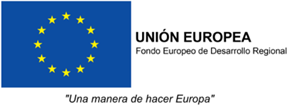Señalización Intercelular durante el Desarrollo y la Enfermedad Cardiovascular
We study how signals and downstream genetic networks regulate heart development, aiming to understand congenital heart disease and cardiomyopathies, eventually guiding strategies for heart repair.
We use CRISPR to create genetically modified mouse models with mutations in genes linked to cardiac development and heart disease, guided by patient genetic data and clinical collaborations. By combining single-cell omics, structural analysis, and advanced imaging, we study gene and pathway regulation of developmental processes that, when disrupted, lead to disease. Findings are validated using reprogrammed human cells where possible, uncovering genetic pathways and therapeutic targets to restore heart cell function.
Our work emphasizes the endocardium, the heart's endothelial lining, as a key signaling source for ventricular, valve, and coronary vessel development. NOTCH signaling, active in embryonic endocardium and endothelium, is vital for cardiac development (PMID: PMID: 26641715, 27056911), with its dysregulation contributing to aortic valve calcification (PMID: 30287945). NOTCH coordinates with BMP2 during valve morphogenesis and regulates other processes through specific regulatory regions and genes (PMID: 29853617, 31249105, 37961886).
To understand ventricular chamber development and its links to cardiac disease, we study trabeculae formation and maturation. NRG1 signaling from endocardium to myocardium drives trabeculation by promoting myocardial migration and proliferation (PMID: 37846569), while NOTCH signaling is essential for wall maturation (PMID: 26641715). MIB1-NOTCH disruption impairs ventricular wall development, causing LVNC in mice and humans (PMID: 23314057). Our murine and hiPSC models show LVNC stems from defective myocardial maturation and prolonged cardiomyocyte proliferation. Exome analysis of families with MIB1 mutations identified modifier genes interacting with MIB1-NOTCH in LVNC and valve abnormalities (PMID: 36325906, 37405741; for more info about our research see: Know more).






